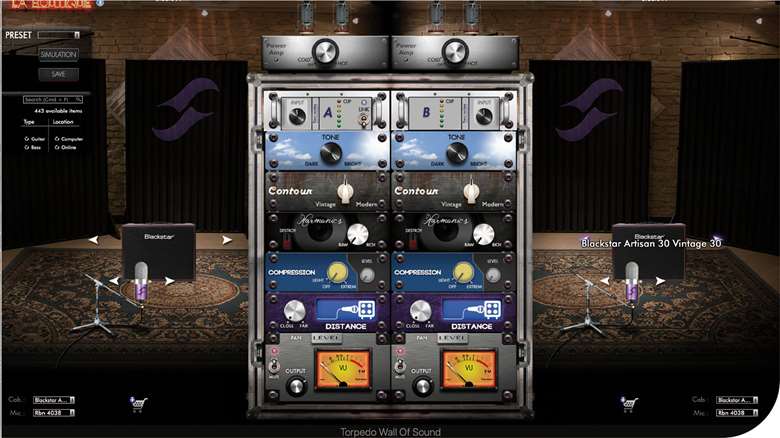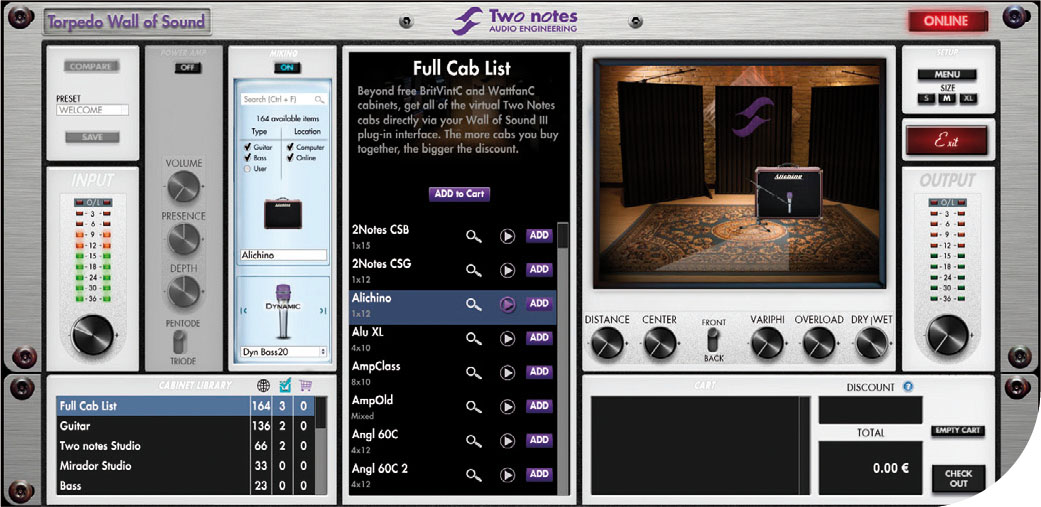Tech Reviews: Wall of Sound
Tim Hallas
Thursday, July 1, 2021
MT's technology editor Tim Hallas tries out the Wall of Sound from Two Notes. He tells us his verdict

Speaker emulations, such as the Wall of Sound plugin from Two Notes, were developed as partner pieces of software to load boxes that connect to guitar amps, allowing them to be turned right up without the deafening volume. Load boxes often disconnect the speaker from the guitar amp entirely, and software like Wall of Sound allows the sound of the amp to be captured via a computer and then run through a virtual speaker emulation.
To the non-guitarist (and to be honest, some guitarists too) this might sound like a complete waste of time – but it is amazing how much difference a speaker cab can make to the sound of a guitar. The difference between running an amp through a 1×8" speaker and a 4×12" is spectacular. Neither is better or worse – but they are very different. As a guitar nerd and a music technology teacher, the appreciation for what effect a speaker cab has on the sound of a guitar is something I instil in all my students.
However, most schools (or guitarists at home) don't have the facilities to run a cranked guitar amp through a 4x12 speaker – they are just too loud and too big. This is where the Wall of Sound really comes into its own. Simply record your guitar or bass through a preamp and load up the speaker emulation plugin on the relevant channels within your DAW.
The Wall of Sound plugin is free to download and try – and you can try every speaker cab available from within the software. However, to keep using the software after 30 days you need to purchase at least one speaker emulation. These start at about €8 so are reasonable, and once you've bought one you own the licence for the software, which includes a couple of free cabs, so you have three to get you started.

Each cabinet can be bought for around €8
Installation
The instructions when you download the software, and the steps on the company's website, imply that installation is easy. However, each time I have done it, it has been a pain. It took several attempts to get my DAW to register that the software was installed, and downloading my licences was equally as frustrating. However, once the software was eventually installed on my machine, it opens up and reads my licences perfectly every time.
Use
The plugin opens up with two guitar speakers in virtual rooms because it is emulating the sound of the cabs in a space in stereo. There are several different spaces to choose from with a variety of different levels of ambience, from tight studio sounds to huge concert halls.
There are so many amp options, but I started with an emulation of a speaker that I actually own – the Blackstar Artisan 2×12". I have had this amp for years, so I know exactly how it sounds. The emulation is pretty good, but it's a little darker than the real thing. This might be a variance in the particular speaker that was modelled, the room used, or the mic placement, but my real model has noticeably more treble.
However, the key thing is that it sounds good. With so much recording done at home by my students over the last year, it's virtually impossible for them to record a guitar amp for real, and plugins like this have really helped. Students have connected their guitar to their interfaces at home and then could run them through the Wall of Sound plugin at college once they returned to site in March.
Summary
This is a great plugin that adds an extra option for making guitars sound better when recorded directly. It has so many options to choose from that there are bound to be some speakers that your students will like the sound of and, at only €8.33 each, they are quite cheap too.

